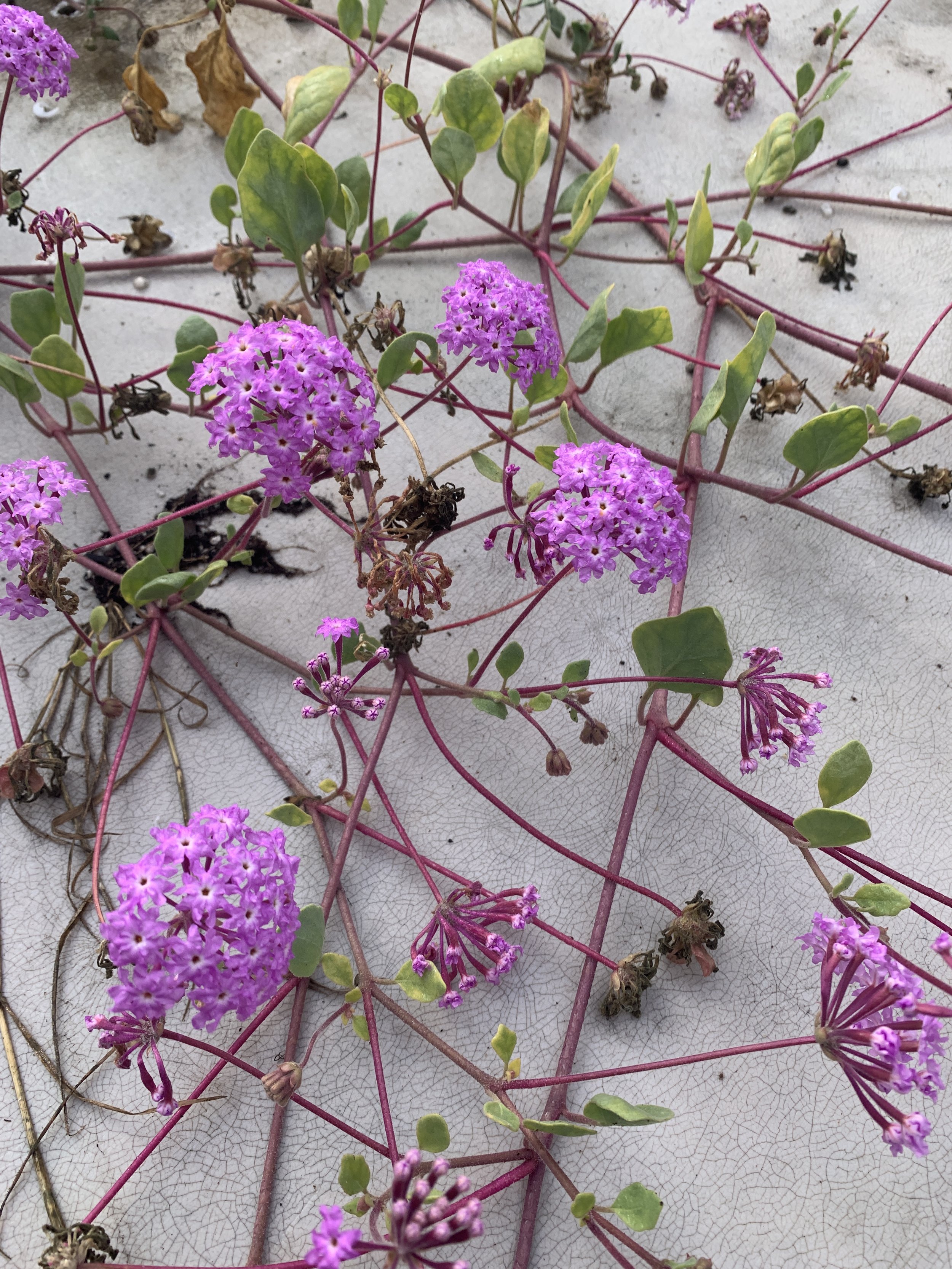Fragile and hardy all at the same time – how can this be? Dune plants are incredibly resilient to moving sands, salt air, wind and nutrient-poor soil. They can withstand almost anything except being walked on. They are also incredibly difficult to propagate and grow in a pampered nursery environment. They crave tough love!
After receiving a resounding “not interested” from other nurseries, Growing Solutions was asked to grow a batch of dune plants for a Southern California coastal mitigation project. We always like a challenge – that’s the fun part of plant propagation.
We took on the task of growing Abronia maritima and Abronia umbellata var. umbellata, the charming sand verbenas seen on protected dunes around southern and central California. This species has beautiful red (A.maritima) or pink (A. umbellata) flowers and produces seeds housed in tough fibrous pods with three wings—the better to float on the tides and catch a hollow in the sand. In nature these pods persist in the wild for several seasons and over time sun and rain will decompose to release the seed.
In the nursery there are several techniques and tricks to achieve germination and once germinated they need a bit of TLC (Tough Loving Care) in transplanting. Ruth Hamilton, former student and Growing Solutions’ horticultural master, did a fine job of bumping up baby dune plants and noticing small changes and nuances that ensured plant survival. We discovered that Abronia follows the movement of the sun throughout the day, orienting its leaves and twisting slightly to track the sun. We also discovered the plants don’t like to be rotated in the nursery different from their adapted orientation.
Part of our success in growing dune plants is recognizing their adaptation to shifting dunes. Plants such as silver bur ragweed (Abrosia Chamissonis), has nasty burrs that are no fun to step on with bare feet. But it’s a great way to spread itself around! Another treasure is beach suncup (Camissoniopsis cheiranthifolia) and the stalwart seacliff buckwheat (Eriogonum parvifolium). To successfully grow plants in the nursery we accept the evolutionary traits the plants have and adapted our growing techniques to the plants’ needs. One way to do this is to divide species such as Abronia and cut back Eriogonum to simulate natural disturbances.
We’ve had a lot of fun and a few challenges growing these plants, with our guiding light being our effort to simulate the natural conditions the plants need to thrive.




